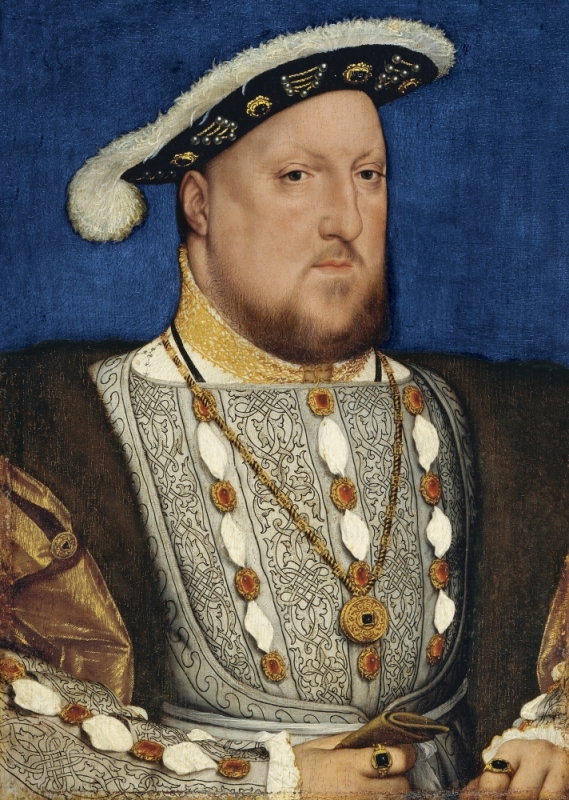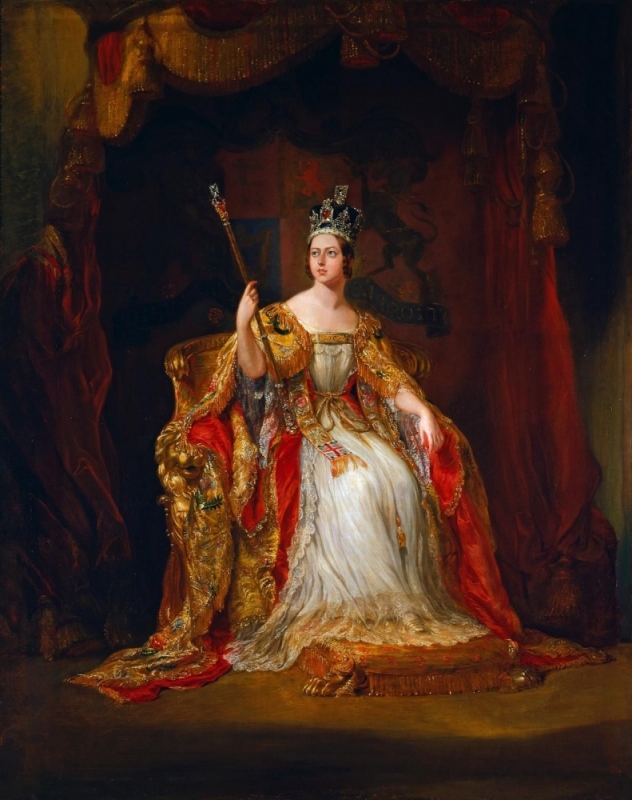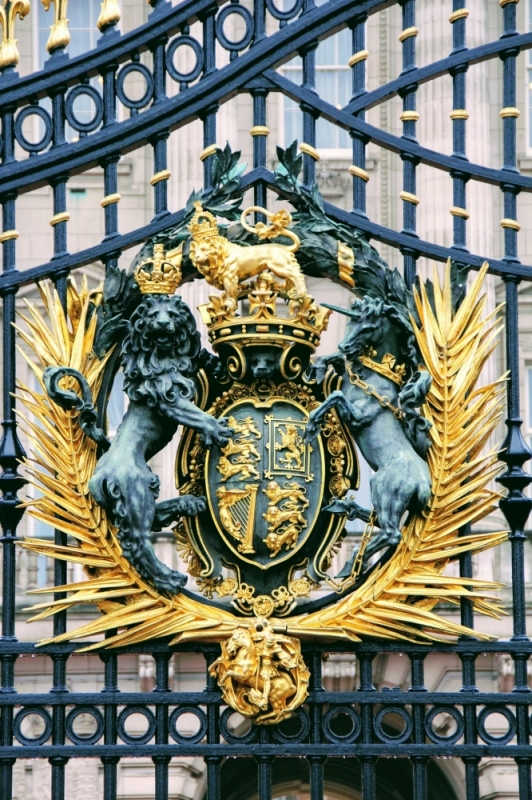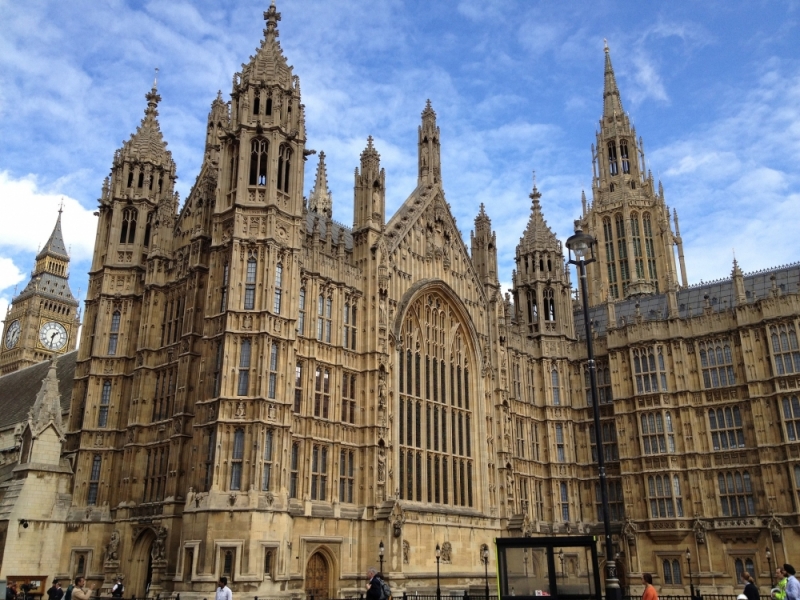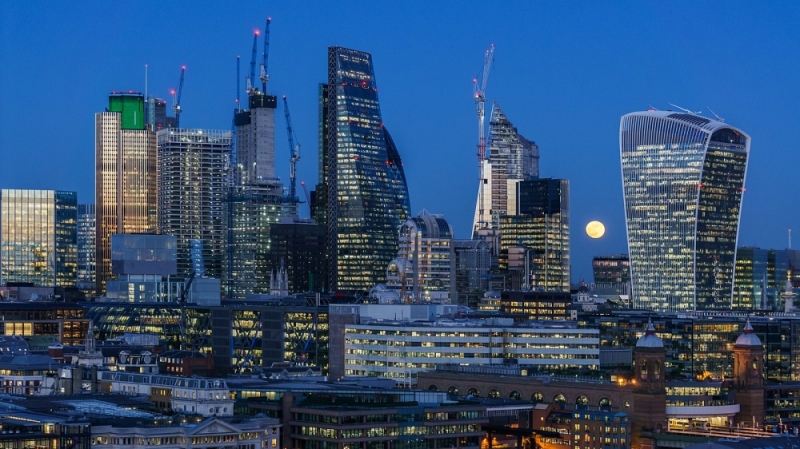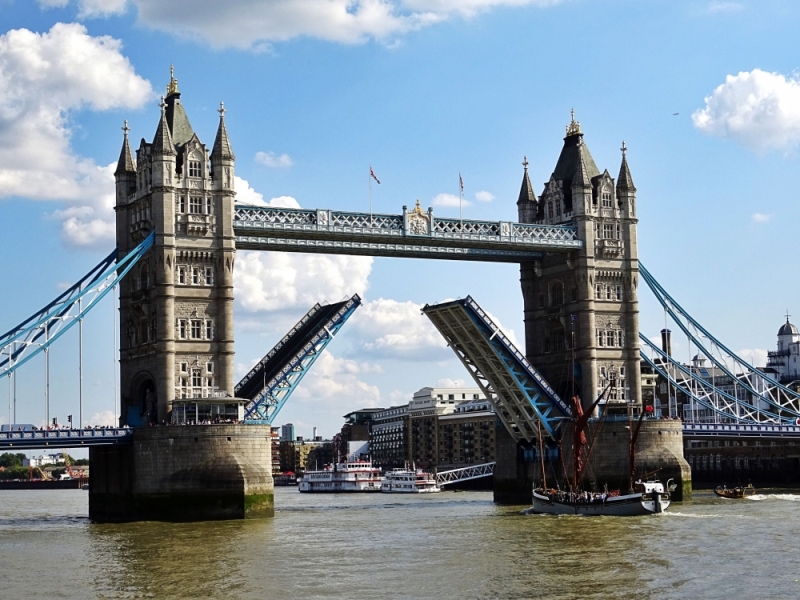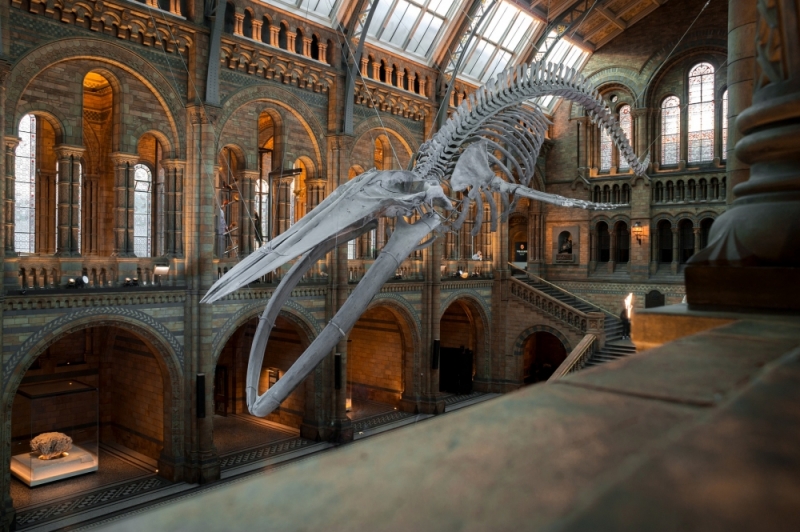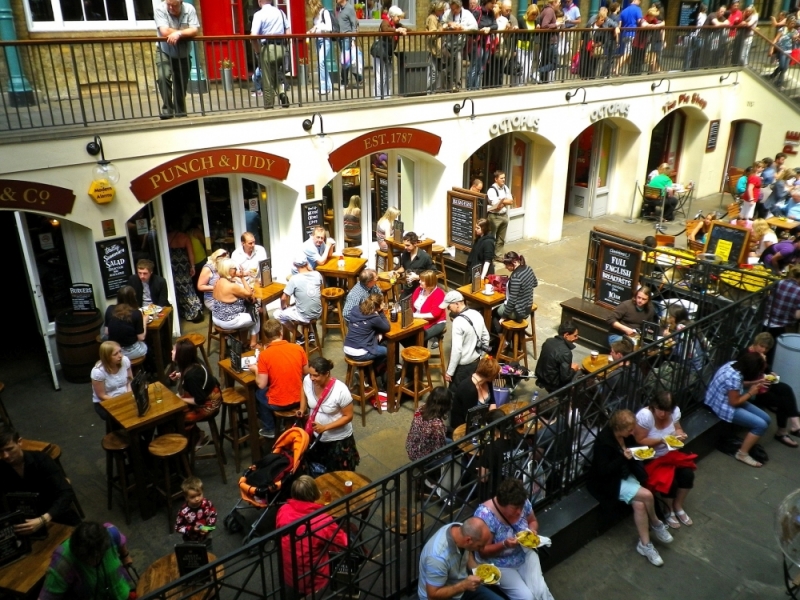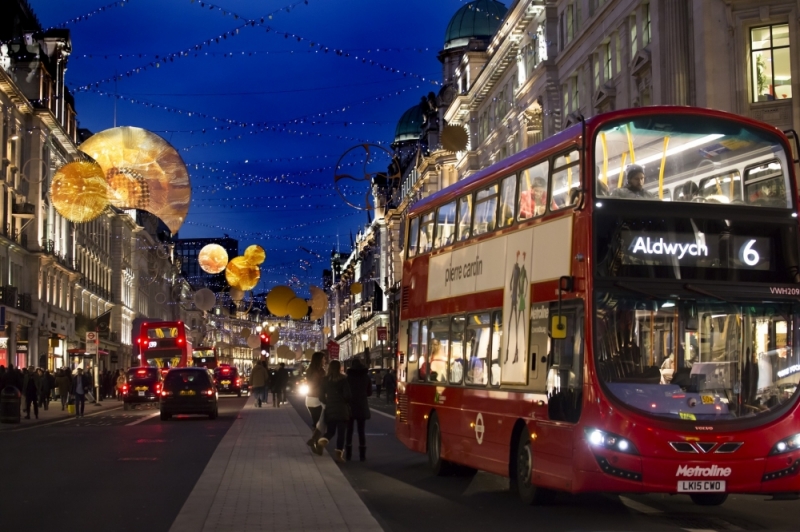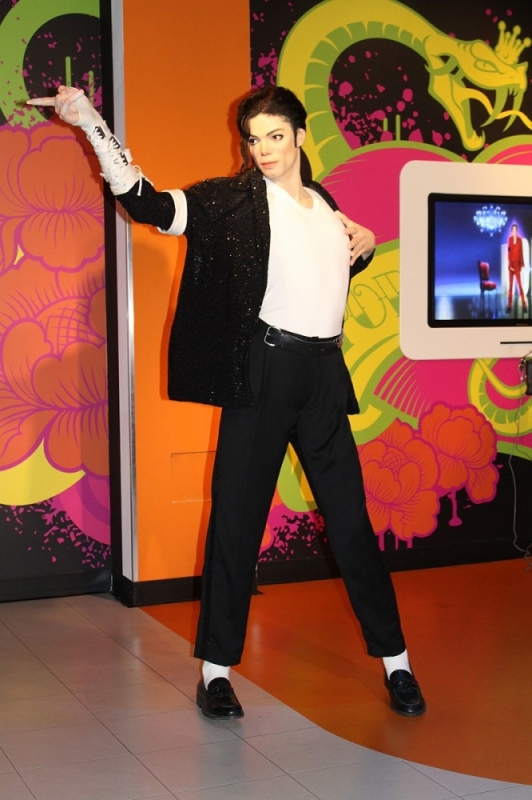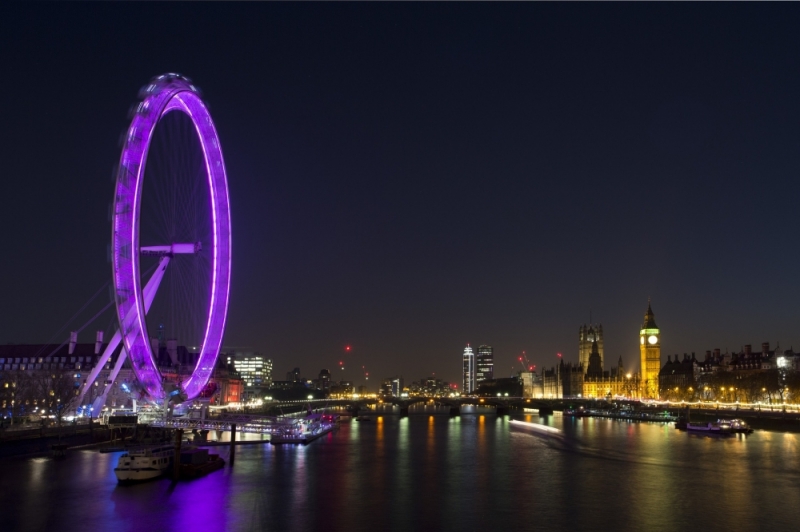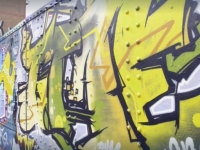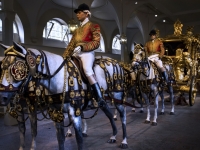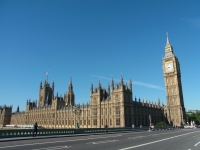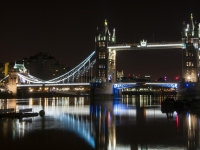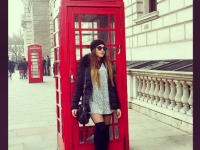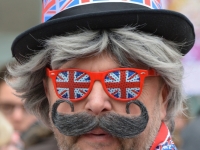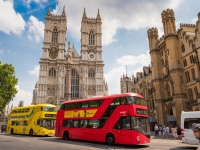London and its origins
London, one of the largest cities in Europe, a multi-ethnic metropolis in all respects, which has very ancient origins. It seems that one of the first settlements dates back to the Bronze Age, as evidenced by some findings from 1996. It was the Romans, led by Julius Caesar who arrived in 43 AD and founded Londinium in 47 AD. The new city, however, was short-lived, as it was burned by the Iceni tribe. Following the fall of the Roman Empire, the Anglo-Saxons who had settled nearby since the 6th century extended their influence to what had been Roman London by founding Lundenwich. For many years, some rulers took turns to have the new city among their domains. In the 9th century London was repeatedly invaded by the Vikings, who carried out regular raids on London. Only in 878, the Anglo-Saxons, led by Alfred the Great, managed to defeat the Vikings and negotiate a peace with them. A crucial moment in English history was 1066, when William I, Duke of Normandy, killed the last Anglo-Saxon king and proclaimed himself King of England, after being recognized by his new subjects, who were rewarded. It was William I who built the Tower of London and also allowed the city to elect its own administrator; his son, William II, instead built Westminster Hall, the very famous palace, on the bank of the Thames which today houses the English Parliament. London developed a lot during the Middle Ages, thanks also to the trade that was organized into corporations, which controlled the city, electing the Lord Mayor. However, development brought overcrowding (the population at that time was just over 80,000 inhabitants, a lot if you consider that it was the Middle Ages) and overcrowding caused terrible sanitary conditions which in turn caused many diseases. In fact, between 1348 and 1365 there were many epidemics of bubonic plague which caused the death of about half the population. Subsequently, London was the scene of bloody clashes between the two Lancaster and York dynasties who fought for the right to the throne. The "war" between the two factions is remembered as the "war of the roses" to recall the symbols of the two dynasties: white rose for the Yorks and red rose for the Lancasters. The war ended with the marriage between Henry Tudor, a descendant of the Lancastrians who were exterminated, and Elizabeth of York. From their union the Tudor dynasty began, which gave England its most important rulers, such as Henry VIII and his (illegitimate) daughter Elizabeth I.
Henry VIII
Henry VIII was the king who, to divorce his first wife, Catherine of Aragon, broke away from the Church of Rome, giving rise to the Anglican Church. Immediately after this schism, he divorced his wife and married Anna Bolena, from whom he had a daughter, Elisabetta, who would become Queen, despite being considered an illegitimate daughter. Elizabeth I was the greatest queen England has had. During his reign, passed into history as the "Elizabethan Age", England became the greatest European power, defeating even the Spanish Army and also beginning the colonization of North America. During the Elizabethan Age, England began its rise as a European economic superpower. Elizabeth never married and had no children, so much so that she is remembered as the virgin queen, so at her death the Tudor dynasty ended. Elizabeth was succeeded by her cousin, the Scotsman Giacomo Stuart. The new monarch, however, entered into conflict with the English parliament, as did his son Charles I Stuart later and it was during his reign that there was a civil war in England that led to the foundation of the Republic, led by condottiere Oliver Cromwell. At the death of Cromwell, however, the parliament immediately restored the monarchy, first with James II who was deposed after a short time and then with his daughter Maria II who was crowned together with her husband, Guglielmo D'Orange. This time, however, the parliament set limits to the new sovereigns who had to sign the "Bill of Rights" which limited the power of the sovereigns. With Mary and William, Britain finally regained its former glory.
Queen Victoria
Another queen that must certainly be remembered is Queen Victoria, who reigned over Great Britain from 1837 to 1901, the year of her death. The Victorian era is the name by which its very long reign is defined and coincides with what is called the Belle Epoque, for the states of Western Europe. It was a time of peace during which Great Britain began to expand to other continents, conquering territories in Asia (it already ruled over India) and in Africa. The Victorian era was that historical period during which, in Great Britain, the "suffraggette" obtained the right to vote, there was a huge unprecedented population growth, but there was also a great migratory flow towards the United States, the Canada, South Africa and the states of Oceania. After Queen Victoria, we have to wait twenty years for another queen to return to the English throne, Elizabeth II. Elizabeth II is the most long-lived sovereign in English history. His reign, which has lasted for about 68 years, has even surpassed that of Queen Victoria. Today, Britain is undoubtedly one of the world's superpowers that sees a population split in half, as demonstrated by Brexit: some, like the Londoners, are opposed to Brexit because they want to live in contact with the world around them , conscientious of the fact that nowadays there is no longer a single state, but a real federation, comparable to the USA and there are those who remain tied to its origins and want to close themselves to the world that surrounds it and that has contributed to making the Gran Brittany one of the largest world nations.
What see
Buckingham Palace
When you arrive in London the first thing to do is, get to Trafalgar Square , the one that is, without a doubt, the main square of London. There in Trafalgar, on a column 51 meters high, there is the statue of Admiral Nelson , who defeated the Franco-Spanish troops, during the Napoleonic wars. In Trafalgar Square, there is the National Gallery , one of the most important museums in the world. Entry is free and you can view the opening hours on the site. From Trafalgar there are 3 main roads: The Mall , the avenue leading to Buckingham Palace, The Strand , which leads to the City and The Whitehall which leads to Westmintster. We advise you to take The Mall, pass under the Admiralty Arch and go to Buckingham Palace . It is there that every day, or almost, the changing of the guard takes place, a very exciting event for young and old. However, we advise you to consult the official site of the changing of the guard (https://changing-guard.com/dates-buckingham-palace.html) and make sure that confirmation is given that the day is actually the event, as it happens that when it rains the changing of the guard takes place indoors and therefore it is not possible to take part in it. After you have witnessed this show you can also take your backpack, your camera and get ready for the fantastic English capital. Leaving Buckingham Palace behind you, continue through the gardens of Saint James, where you will have a great time chasing squirrels in the meadows, to photograph them.
Westminster
You will arrive in Westminster where you can visit the Abbey , inside which the English sovereigns and the greatest personalities of the history of Great Britain are buried. Westminster Abbey is very suggestive, considering that it has been there for about a thousand years, as it was built at the behest of Edward the Confessor, between 1045 and 1050. William and Kate got married here in 2011 and it was always here that he came celebrated the funeral of Lady Diana, in 1997. After visiting the Abbey, you can move to the Palace of Westmintster , but passing before the statue of Churchill, the greatest British of all time, to take a picture with his statue behind you. The Palace of Westminster is a building whose first settlements date back to 1097 and of which today we can still see the Hall of Westminster. The Palace, in its more than 1200 rooms, spread over 4 floors, with over 3 km of corridors, houses the House of Parliament , the seat of the English Parliament. The palace has two towers: the first, the Victoria Tower which is the one from which one enters the Parliament. Then there is her, the Clock Tower, the tower on which there is the famous London clock, Big Ben . But be careful, because the name Big Ben does not refer to the clock, but to the 13-ton bell that rings at all hours and was installed by Benjamin Hall. On the opposite bank of the Thames, to draw your attention there is the big Ferris wheel, installed for the New Year 2000, the London Eye .
La City by Saint Paul
After visiting what is the "City of Westminster", you will absolutely have to move to the City of London, which occupies what was once Londinium founded by the ancient Romans. About 300,000 people work in the City, as it is the financial heart of the British capital. There are wonderful historic buildings, such as the Bank of England, the Monument (the monument to the great fire of London) and the beautiful Cathedral of Saint Pau l. The Cathedral of Saint Paul that you can visit today is the one risen from the ashes of the burnt Cathedral during the London fire of 1656. If you arrive to the Cathedral walking along the Millennium Bridge , you will find yourself in front of all the majesty of its dome, inspired by the famous dome of St. Peter's in Rome. In Saint Paul the royal wedding of Charles and Diana was celebrated, but also the funeral of Winston Churchil, who is buried here, along with other important personalities such as, for example, Admiral Nelson. But in the City, in contrast to these historic buildings, you will also find magnificent ultramodern buildings like the many skyscrapers that crowd the London financial heart. Among the many, you will surely recognize " The Gherkin" (the cucumber), the famous skyscraper that has the shape of a bullet found in 30 St Mary Ax, from which it takes its name; or there is Fenchurch Street, the famous skyscraper because it hosts, on the 35th floor, a beautiful Sky Garden, which can be visited for free (you have to book the entrance through the website), or you can visit it if you decide to dine and / or take a drink in one of the restaurants and bars located on the 35th floor of this unique skyscraper. From the Sky Garden, you can also see the famous " The Shard" (the splinter), the skyscraper located on the banks of the Thames, opposite the City and which was designed by Renzo Piano. Inaugurated in 2012, The Shard, with its 312 meters, is the tallest building in Britain.
Tower Bridge and Tower of London
If you are near The Shard, then you will be very close to Tower Bridge , the most famous drawbridge in the world. Tower Bridge is one of the major symbols of London, probably second only to Big Ben. Its history is relatively recent, as its construction began in the second half of the nineteenth century. The bridge can be visited by paying a ticket: you can enter its towers and cross the walkway that connects one tower to another. As river traffic has decreased, it is difficult to see the raised bridge. There are established days and times, which you can find on the Tower Bridge website, where you can see the bridge open to river traffic. Tower Bridge takes its name from the nearby Tower of London , the ancient royal residence, built by William the Conqueror in 1078 to defend the Normans from invaders. The Tower of London is a UNESCO heritage site and is one of the oldest monuments in the British capital; it was used as a royal residence, state prison, treasury, arsenal and, finally, home to the Crown treasure. The jewels of the English Crown are in fact kept in the Jewels House inside the Tower of London where, in defense of the jewels, there are armed guards. The Tower of London owes its fame above all to the legend of the crows: among the towers of the fortress there are 6 ravens, the Ravens, and King Charles II maintained that if these crows had abandoned the fortress, the monarchy and Great Britain would have fallen into ruin.
Tate Modern - British Museum
In London, all national museums are free, so we advise you not to miss the National Gallery , as we have previously suggested. Then there is the British Museum, the first public museum in the world, founded in 1753 by Sir Hans Sloane. Inside the museum there are about 8 million exhibits, objects and testimonies of the history of humanity, starting from prehistory. Some artifacts that can be seen in the British Museum are " La Stele di Rosetta ", which allowed us to decipher hieroglyphics; then there are many finds from ancient Egypt, the remains of the mausoledo of Halicarnassus, sculptures from the Parthenon and many, many artifacts so that it is impossible to visit the whole museum in one day. Another beautiful museum not to be missed is the Tate Modern which is located inside a former thermoelectric power station in the Bankside area, on the banks of the Thames. Inside the Tate Modern it is possible to find operas of the greatest masters of contemporary art, such as Picasso, Cèzanne, Chagall, Dalì, Gaugain, Boccioni, Warhol and many others. Absolutely not to be missed.
Covent Garden, Portobello, Camden Town.
Many of the things to see in London are not just monuments, but real neighborhoods. For example, there is Covent Garden , the artists' quarter, where even Charles Dickens lived (his house on Doughty Street can be visited), famous for its many theaters, including the Royal Opera House . Covent Garden, since 1654, has been the site of a large fruit and vegetable market, which since 1904 has given way to the Jubilee Market , the only London market that belongs entirely to traders. But if we talk about markets we cannot not talk about the Portobello market . Portobello is a street in the notorious Notting Hill district, famous because every day there is a large market that attracts many tourists. In particular, on Saturdays there is the largest antiques market in all of London. Moreover, Portobello is a lively street, full of pubs and restaurants and if you are in London the last week of August, you might be lucky to run into the hilarious Notting Hill carnival, a parade of colors, dances, music and disguises that is held every year, at the end of August. Finally, if you are a market lover, you should definitely go to Camden Town , the most punk part in all of London. All students, both English and non-English, attend Camden Town and its markets where you can really find everything and even at low prices, to be in London. Here you will find everything from clothing to food to the strangest objects you can imagine.
Movida and entertainment
A whole book wouldn't be enough to talk about London's nightlife. In London it is really possible to do anything you think about.
If you are a museum lover, you will be spoiled for choice; if you prefer theater, Leicester Square and the entire Covent Garden neighborhood are full of theaters where you can see the most famous shows of the moment, such as "The Lion King", "School of Rock" and "Mamma Mia".
Regent Street
If, on the other hand, you prefer to go shopping, you should definitely go to Regent's Street , the beautiful road that leads from Oxford Circus to Piccadilly Circus and where there are the boutiques of the most important world brands, but also department stores, such as Top Shop and Primark . Moreover, even just for a ride, because the product prices are quite prohibitive, you can go to the Harrods department store , in Knightsbridge , where on the sixth floor there is also a bistro where you can have a break with tea, like real Englishmen . If you are lucky to have sunny days you could take a walk in Hyde Park , the largest park in London, so big that you risk getting lost. In the huge park, which is the lung of London, you can do many activities: you can go by boat on the Serpentine pond , or you could sit on one of the many deck chairs that you can rent for a few hours; if you love Peter Pan, you could go in search of his statue, located in the Kensington Garden , of the gardens adjacent to Hyde Park. If you decide to go to the park on Sunday, in the part of the park that overlooks Marble Arch, in a corner, you will find the infamous Speaker's corner. It is a very famous place, where debates and public speeches take place every Sunday morning. Returning to the Thames, for those not afraid of heights, we suggest taking a ride on the imaginative London Eye , the giant Ferris wheel that was inaugurated in London on the occasion of the 2000 New Year.
Madame Tussauds Museum
Instead, for those who hope to meet the actor, actress, singer or band of his dreams, in wax and not exactly in the flesh, there is the renowned Madame Tussauds wax museum , the most famous museum of the waxes in the world. The museum is named after Marie Tussauds, a French woman who was very good at modeling wax. On a journey to England, Madame Tussauds brought with her her wax statues which gave rise to the collation of this very famous museum. Indeed, although Madame Tussauds was French, it was in London that the first wax museum was opened in 1884 at the Baker Street site, which you can recognize by its large green dome. If you go to London with your children, who will surely be Harry Potter fans, we advise you to go to the beautiful King's Cross station , made famous by the wizard's book and film saga. Just like in the movie, in King's cross you will find track 9 and 3/4 with Harry's trolley stopped just as he is crossing the wall to get to the magical track. Here you can get in line to take a picture while pushing Harry's cart. If you have more days available, you can go to Warner Studios where there is a tour completely dedicated to the films of the English wizard. You will find the reconstruction of Diagon Alley, with the chopstick shop, Olivander, the Gringottt bank and even the interiors of the beautiful school of magic at Hogwarts. If instead you are young people who want to have fun, in the disco or in some local, well, you will be spoiled for choice. London has the reputation of hosting some of the largest nightclubs in the world, such as the Ministry of Sound , a nightclub with two large halls that hosts the biggest dance, house and trance DJs on Friday and Saturday nights. Another famous nightclub is surely the Fabric, which in 2009 and 2010 was reviewed as the second best nightclub in the world.
The Queen's walk
If you arrive in London in the summer, instead of closing yourself in the clubs, you can enjoy the evenings held along the The Queen's walk , the promenade that runs along the Thames, starting from the London Eye up to the Southbank. For Sheakspere fans, however, don't miss a theatrical performance at the Globe Theater , the English theater founded by William Sheakspere and his company. What you can visit today is a reconstruction, which you can access either for a guided tour or to attend some sheaksperiana performances. For a few pounds you can watch the performance standing up, just as it happened during performances in the Sheaksperian era. Finally, for football lovers, there are lots of stadiums to visit. The only city of London has between 4 and 7 teams that play in the Premier League and among the most famous are Chelsea, Arsenal and Tottenham. All have a stadium that can be visited by purchasing tickets online or at the sales points in the stadium. Stemford Bridge and the Emirates Stadium have so many tourists every year, to be compared to real museums. In short, as we had anticipated, there is no risk of getting bored in London. There is entertainment for all tastes and for all age groups, it is up to you to choose the thing that interests you most.
Climate, curiosity and advice
Climate: Although it is said that London is a very rainy city, in reality it is not really so, since the annual rainfall falling on London is less than those falling on other European cities further south, like Bordeaux or Rome. The high figure is the number of days when it rains which are, on average, 150 days a year. , The rain falling on London is thin drizzle. It is unlikely that you will witness any real storms. In fact the English are used to walk with the k-way that shelters them from the light drizzle. The wettest months are the autumn ones, especially October. Moreover, except for the last days of September that are still fresh, in autumn the temperatures start to drop and the air becomes cold. If you decide to visit London in late autumn, remember to put wool sweaters in your suitcase. Even in spring there is some instability; it will often happen that, in the space of a few hours, heat, cold, sun, clouds and rain alternate. The London winter is certainly cold and very humid. On rainy days it can happen that there are accumulations of fog and mist. Between December and February you can find the snow that can fall between 3 and 5 times in these months. Finally, summer, the best season to visit the English capital. The summer weather is slightly more stable than the other seasons, but you will still have a bit of drizzle ... that, in London, never fails, therefore, our advice is to always carry a suitcase with you a umbrella or a k-way. Summer temperatures are never too high and are around 20/25 ° allowing you to walk without being overwhelmed by the heat of the Mediterranean countries. In recent years, summer temperatures have even exceeded 30 ° C but it is only a few days throughout the summer season.
Trivia: But do you know that London has two mayors? Yes, because, in reality, this great metropolis is divided into two: on the one hand we have the economic and financial heart of London, the City, the part that was, to all effects, the first settlement of the city and which has a his mayor, who is currently David Lewis. In addition, there is the best known Labor Sadiq Khan who is instead the mayor of Greater London, the great London, the part that includes the rest of the metropolis, except the City, of course.
Tips: When you pack your suitcase to go to London, remember to bring an adapter with you, as if you need to recharge your phone or use your computer, you will need an adapter to connect you to English sockets that are different from those in other European countries. When you leave, read up on what airport you will be on as there are 6 airports in London and there are different ways to reach the city center from the different airports. We recommend the buses and / or trains, but also the underground, if you arrive at Heatrow. We strongly advise against preferring a taxi because some airports are also 60 km from the city center, so the taxi will cost you a lot. Finally, as Britain is out of the Euro and you will have to change the euros into pounds, we advise you not to do so at airports, preferring the changes you find throughout the city. Also, know that if you prefer, you can pay any type of service with your debit card and / or all credit cards. Think that even the subway is paid simply by passing your debit and / or credit card on the turnstile.


